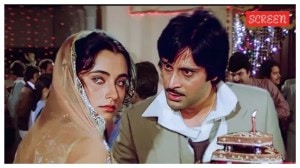The Philosopher’s Stone
Vadehra Gallery of New Delhi has brought out a most unusual book: Svaraj: A Journey with Tyeb Mehta’s ‘Shantiniketan Triptych’...

Vadehra Gallery of New Delhi has brought out a most unusual book: Svaraj: A Journey with Tyeb Mehta’s ‘Shantiniketan Triptych’ by Ramchandra Gandhi. It is a multiple journey of self-discovery. The overt sutra is an exploration of a three-panelled painting by Tyeb Mehta made in 1985. Gandhi, a former professor of philosophy and comparative religion and a devotee of Ramana Maharishi, writes the book in the form of a long discourse to Anjali Sen, the IA&AS officer who was the dynamic director of the National Gallery of Modern Art, New Delhi, between 1994 and 2000. (Gandhi, incidentally, is the frequent collaborator of dance-dramas on modern sages like Vivekananda with another IA&AS officer-artiste, Shovana Narayan.)
Tyeb Mehta, born in 1925, learnt drawing and painting at the JJ School of Art, Mumbai, lived in England and America and is now highly respected as a senior modern Indian painter, who holds the record for the most money ever fetched for a single painting by an Indian. These are the dramatis personae at first sight, while the triptych Mehta painted while artist-in-residence at historic Shantiniketan between 1984 and 1985 is the base on which Gandhi squeezes tubes of paint from his own head in the colours of philosophy, history and politics.
|
Interesting, so far? Unusual, definitely! But unease shadows even a willing reader from the beginning. Because, the foundation, you see, is built on sand. The triptych is not a great painting, despite Gandhi saying so, despite Mehta’s seniority. Panel One shows a slack and depressed huddle of bloated, distorted figures. Panel Two, in the centre, shows a decapitated head and its (severed?) hand in a mudra, with a pole (tree?) rising above it. At the base of this pole, a slack woman is being nuzzled by a goat and three sad figures loom behind them. To their left is another grotesque black figure topped by a double head (man-woman). Panel Three shows a terrified green double-headed figure presumably being hanged by an angry group of people, while three others are seated nearby in attitudes of shock.
It is derivative to an embarrassing degree, from European masters like Picasso and Matisse. It is, moreover, typical of Mehta’s generation: neither a fresh way of seeing nor being. It’s nice to have the richness of Hindu myth popping frequently in and out of the narrative, But to have Gandhi ramble on about the painting’s Upanishadic or advaitic meaning and its resonances of svaraj (self-realisation for both the country and the individual) is a surreal and macabre experience. Sample this: “God or Self as father sees no not-Self and is willing to substitute for the goat marked out for slaughter, and demonstrate to another child of his (a deeply camouflaged, obscured, self-image), the executioner, that annihilationist anxiety and pervasive peace both literally lie in our own hands…” (and that’s not the end of the sentence yet, by a long haul).
Or else: “So, Anjali, the reunion of Shiva-Shakti and Shunyata is resurrection as self-realisation, svaraj. Spiritual traditions are also Self- self-images; and may their interconnectedness have the blessings of Sri Ramana Maharishi and your good wishes and prayers.”
And so it goes on remorselessly, through thirty-four chapters, postscript, notes, references and glossary. There are many visuals, of Tyeb Mehta’s own work, of his “inspirations” (Picasso, Magritte and others), photographs of Ramana Maharishi, Ramakrishna Paramahamsa and Arunachalam. One wants to weep in sheer frustration. Here was yet another splendid chance for our elders to talk to us, to share their insights meaningfully. And what do we get? The last march of the dinosaurs, the utter mediocrity of woollyspeak. Why can’t they make sense to us? Why do they burst to smithereens, showing off to a ghost-gallery of goras? Why can’t they leave great ideas from Yajnavalkya and Adi Shankara alone, instead of trying to make them a philosopher’s stone to turn dross into gold?
Just this January, I asked Dr Kapila Vatsyayan, “Why did your generation mess it up for us, Ma’am?” “Because we were still not free inside,” she shot back with commendably brutal honesty. I rest my case.
Photos





- 01
- 02
- 03
- 04
- 05


























